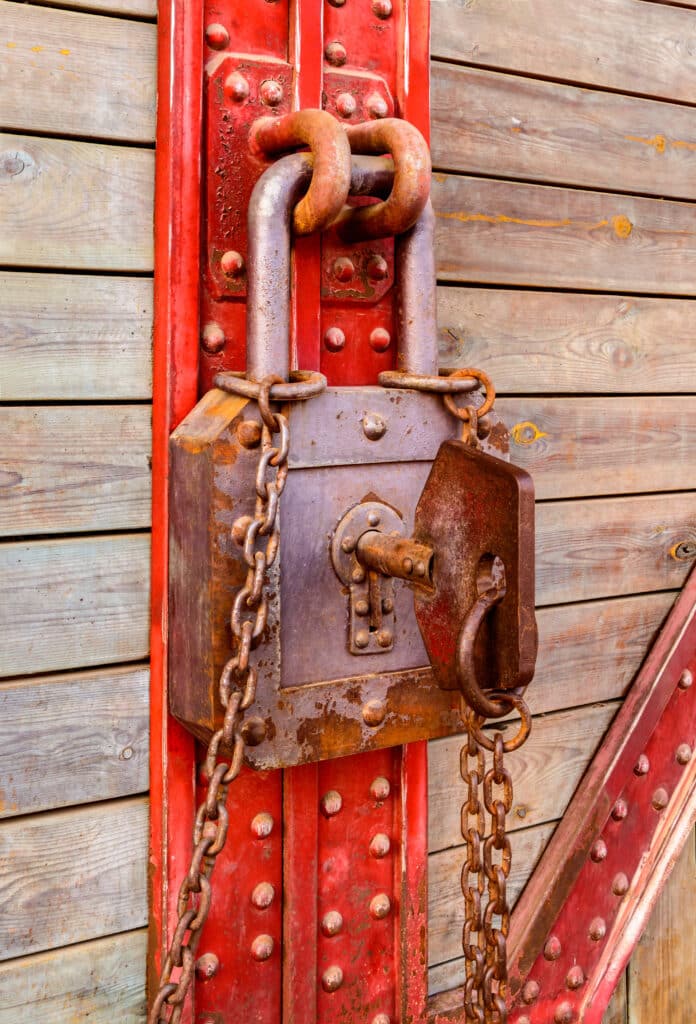In today’s era, where telecommuting has become the norm, ensuring the safety of our home Wi-Fi networks has never been more essential. But many of us might be wondering how should you secure your home wireless network for teleworking? This isn’t just about keeping your Wi-Fi connection from being sluggish because your neighbors are streaming movies off your bandwidth.
Securing your wireless network is about protecting sensitive work data from cyber threats and ensuring that your privacy remains intact while using your home Wi-Fi network.
In this guide, you’ll get straightforward steps to bolster the security of your Wi-Fi network. Switching up your router’s factory-set passwords, establishing a separate network for visitors, and consistently updating the software are just some of the strategies we’ll delve into to shield your online realm. Plus, discover how enabling WPA3 encryption can act like a digital fortress for your online activities, and learn how to disable remote management for a safer environment.
We’re here to make sure that by the time you finish reading, making unauthorized access to your network will be as hard as breaking into Fort Knox. So, how should you secure your home wireless network for teleworking?
Table Of Contents:
- Understanding the Importance of Home Wireless Network Security for Teleworking
- Essential Steps for Securing Your Home Wireless Network
- Enhancing Security with Advanced Encryption Standards
- Managing Access Through MAC Address Filtering and Remote Administration Controls
- Setting Up a Guest Network for Enhanced Security
- Utilizing VPNs for Secure Remote Access
- Smart Device Security in Your Home Network
- Regular Firmware Updates as a Pillar of Network Security
- Best Practices in Password Management and Data Protection
- FAQs: How Should You Secure Your Home Wireless Network for Teleworking
- Conclusion
Understanding the Importance of Home Wireless Network Security for Teleworking
Teleworking’s rise has turned home networks into prime targets. Let me break it down.
The Risks of Unsecured Networks
Data breaches are like uninvited guests at a party. They sneak in, often unnoticed, through your wireless network’s weak spots.
Subsequently, malware proliferates, sowing disorder and commandeering gadgets in its wake. It gets worse when privacy violations come into play, with personal information up for grabs by anyone with the skills to look.
Hijacked devices sound like something out of a spy movie but are very real threats in an unsecured environment. Imagine your laptop turning against you under someone else’s command — scary stuff.
A secure connection acts as the bouncer at this wild digital party; keeping data safe and ensuring only those on the guest list (you) have access.
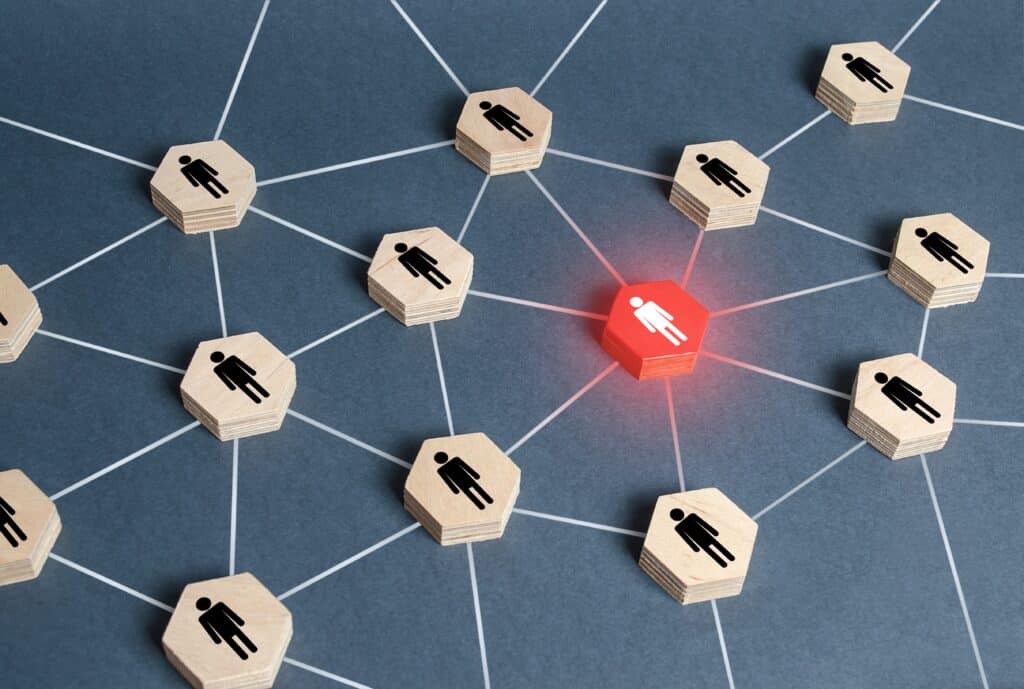
Benefits of a Secure Connection
Your home Wi-Fi isn’t just about strong signals anymore; it’s about safeguarding your professional life while teleworking too. A secured network is akin to having an invisible shield around all online activities — protecting client info and sensitive company data from cyber snoops looking to cash in on unprotected networks.
To keep everything locked tight, check out what is a VPN?. This tool encrypts your online movements making them unreadable to outsiders — a must-have for remote workers handling confidential tasks across their wireless network daily.
Besides encryption via VPNs, boosting security also means regular maintenance: changing default credentials that hackers love exploiting (yeah, they know “admin” is everyone’s go-to), updating router software regularly because outdated systems are open invitations to attacks and finally activating firewalls which serve as gatekeepers controlling what goes in and out of your network.
Change Default Credentials Immediately
- An alarming number still use ‘admin’ as their password — it might be convenient but screams welcome to hackers seeking unauthorized access.
- Routers come with generic usernames/passwords known far wide within hacker circles making them easy prey unless changed pronto.
- Gaining entry can let intruders snoop or cause havoc from afar without breaking much sweat — they don’t even need to be nearby thanks to modern technological capabilities allowing remote management.
Essential Steps for Securing Your Home Wireless Network
Change Default Credentials Immediately
Hackers love low-hanging fruit. And guess what? Default usernames and passwords are their favorite snack. The moment you set up your router, changing default credentials is like putting a lock on your digital front door. It’s shocking but true; hackers often gain access using these defaults.
A strong password is your first line of defense against unwanted guests. Think beyond “admin” or “password.” Go wild with special characters, mix in some numbers, and don’t shy away from uppercase letters. Regular updates to your login info keep potential intruders guessing.
The benefits? Peace of mind knowing that unauthorized access just got a whole lot tougher. Remember, WPA3 offers the strongest encryption out there to keep your network safe.
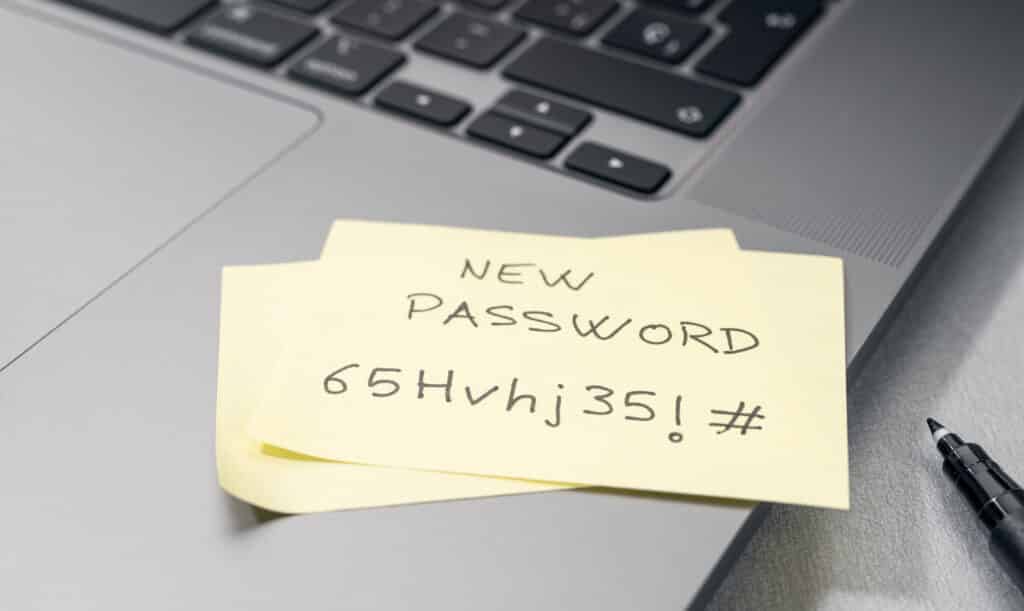
Disclaimer: This image is intended to be symbolic. Please don’t use any password you find online, nor write down your password anywhere.
Enhancing Security with Advanced Encryption Standards
Your Wi-Fi needs armor, and WPA3 encryption is the knight in shining digital armor it deserves. This isn’t just any upgrade; it’s currently the highest level of protection available for home networks.
Enabling this feature might sound daunting, but fear not. A quick visit to your router settings through a web browser should do the trick. Once enabled, consider all data flying across your wireless network as unreadable gibberish to outsiders – exactly what we want.
Managing Access Through MAC Address Filtering and Remote Administration Controls
You wouldn’t hand over keys to just anyone walking down the street, right? That’s where MAC address filtering comes into play — think of it as giving exclusive VIP passes for devices allowed on your network.
Disabling remote administration features further seals off entry points by ensuring no one can tweak settings unless they’re physically connected to your network — a must-do step if you value keeping nosy neighbors or malicious attackers at bay.
Setting Up a Guest Network for Enhanced Security
Giving visitors unrestricted access can be risky business—like leaving candy unattended at Halloween. A guest network acts as an isolated chamber within which visitors roam freely without ever getting close enough to mess with critical internal resources or stumble upon sensitive information belonging to you.
Enhancing Security with Advanced Encryption Standards
WPA3 encryption is the guardian of your Wi-Fi network. Imagine a cyber sentinel standing guard, ensuring no intruders can breach your digital threshold.
This newest standard in network encryption doesn’t just lock the door; it changes the locks every time someone leaves or enters, making unauthorized access nearly impossible. Imagine it as armor for your data that’s always adapting and strengthening.
To set up WPA3 on your router, dive into its settings via a web browser. Not all routers are fluent in WPA3 yet, so check compatibility first.
Why Wi-Fi Protected Access Matters
Wi-Fi Protected Access (WPA) isn’t just about securing connections; it’s about peace of mind. With WPA3, you’re getting the strongest encryption available for home networks.
The jump from WPA2 to WPA3 encryption was monumental. Where WPA2 had vulnerabilities that left room for intruders to force their way in through brute force attacks, WPA3 closes those gaps tightly.
If you’ve ever worried about someone snooping on your online activities or stealing sensitive information straight from your wireless connection — upgrading is a no-brainer.
Making The Switch To Strongest Encryption
Moving to the strongest form of protection, a.k.a. enabling Wi-Fi Protected Access, might sound daunting but fear not. Start by accessing router settings through any web browser connected to your network. Ensure firmware is updated because new software often supports new standards. Next, search for “Security” or “Wireless Security” options and select “WAP-PSK [AES]” if given an option between versions – go with whatever mentions ‘WAP-PSK’ along with ‘AES’, indicating stronger security protocols. Remember, setting this up keeps prying eyes off personal data while teleworking safely from anywhere within reach of your home Wi-Fi signal.
Managing Access Through MAC Address Filtering and Remote Administration Controls
Diving into how we secure our home Wi-Fi is akin to learning the ropes of digital safeguarding. It’s like locking your digital front door.
Why MAC Address Filtering Matters
You’ve got a unique identifier on each of your devices, called a media access control (MAC) address. Imagine it as a unique ID card that every one of your electronic buddies carry. By setting up MAC address filtering, you tell your router who’s allowed in and who’s not.
This step adds an extra layer to secure your Wi-Fi network by limiting connections only to known devices. Unauthorized access attempts get blocked right at the gate.
To start, log into your router settings via a web browser using admin credentials. Look for “MAC address filtering” under security settings and add the MAC addresses of all devices you trust.
The Power Off Button for Remote Management Features
Your router comes with remote administration controls out of the box, letting you adjust its settings from anywhere — handy, but risky if left open to the world.
Disabling remote management features drastically reduces vulnerability to external attacks since hackers can’t meddle with what they can’t touch. To disable this feature, dive back into those router settings through any standard web browser and look for “remote administration” or similar terms; switch it off.
A Practical Step-by-Step Guide to Secure Your Network Further
- Navigate again through that web interface on your browser; yes, where we turned off remote management features earlier.
- Create separate profiles within “access management” sections for everyone in the house—this way, even if one device is compromised, others remain protected.
- Last, but not least: regularly update firmware (yes, this means making sure that router software is updated) and passwords — the latter should be strong enough (think special characters).
Closing those open doors doesn’t just keep out today’s threats—it future-proofs against tomorrow’s headaches too.
Setting Up a Guest Network for Enhanced Security
Imagine your home Wi-Fi as a private club. Now, creating a separate guest network is like offering a VIP lounge for visitors.
By setting up this special guest network, you’re essentially fortifying your main online sanctuary, all the while providing friends a way to browse freely without endangering the digital fortress that is your primary connection. Offering access while safeguarding your core digital fortress is the name of the game.

The Benefits of A Separate Network
A guest network acts as a buffer zone. It limits what visitors can see and do on your Wi-Fi, keeping them away from your personal data stash.
You wouldn’t hand over the keys to every room in your house, right? In the same vein, this configuration prevents guests from inadvertently accessing confidential materials or transmitting harmful software to your devices without their knowledge.
Guest Networks Minimize Risks
Mixing visitor devices with yours is like sharing utensils during flu season — risky. Guests may bring along viruses (the digital kind) that could spread across connected gadgets at home.
A separate guest network minimizes this risk by isolating their online activities from yours. Think of it as quarantine measures for electronic devices — a way to keep potential infections contained.
How To Set One Up
To kick things off, log into your router settings through a web browser using the IP address found on the device itself or its manual.
In those settings, look for an option labeled “Guest Network” or something similar and follow prompts to create one. This usually involves picking out an easy-to-remember yet secure password — not “password123”. Remember: strong passwords are key.
Maintaining Your New Setup
With great power comes great responsibility — you’ve got another network to look after now. Keeping software updated is crucial; it patches up vulnerabilities hackers love exploiting. Routinely changing that guest password helps too; it keeps former guests from hopping back on next time they’re nearby and curious.
Last, but not least: MAC address filtering adds another layer of control by allowing only specified devices onto either of the networks, which makes managing who gets access even easier.
Surely setting up and maintaining this virtual VIP section takes some effort. But remember, you’re doing this not just for convenience, but mainly because ensuring both privacy and protection in today’s interconnected world has never been more important.
Utilizing VPNs for Secure Remote Access
Working from home? A Virtual Private Network (VPN) is your best friend. It’s like a secret tunnel for your data, keeping prying eyes out.
VPNs encrypt all the traffic coming in and going out of your device. This makes every online activity you do unreadable to outsiders. Imagine sending a letter in an unbreakable safe through the mail; that’s what a VPN does for your digital info.
Here’s where you can learn more about how VPNs work. It’s crucial knowledge in today’s remote working world.
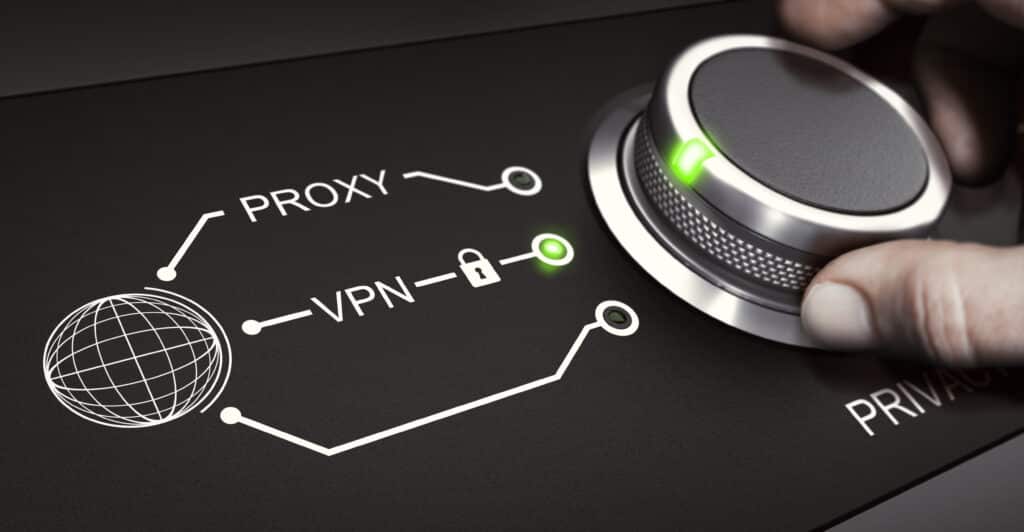
The Risks Without One
Hackers love unsecured connections. They use these to sneak into networks and steal precious data, leading to identity theft, or worse.
An open network is like leaving your front door unlocked: anyone can waltz right in. But with a secure remote access setup via a VPN, it’s as if you have an advanced security system guarding every entry point.
Beyond Encryption: The Full Package
A solid virtual private network offers more than just encryption. It hides your real IP address, making it harder for advertisers (or hackers) to track you across sites.
This enhanced privacy means even when connected to public Wi-Fi, which are notorious hacker hangouts, you’re safeguarded against snooping, or attacks designed to capture sensitive information such as login credentials or financial details.
Selecting Your Shield Wisely
All VPNs aren’t created equal though. Make sure yours doesn’t keep logs of online activities — privacy should be paramount. Choose one that boasts strong end-to-end encryption standards akin to those used by banks.
Prioritize speed too because no one likes waiting on slow-loading pages, even if they’re super secure.
Last but not least, ensure compatibility with all devices. Whether it’s laptops, mobile phones, or tablets, everyone should enjoy protected access during telework without hiccups.
Using a virtual private network while teleworking isn’t just recommended; it’s essential.
By leveraging a VPN, you elevate your online navigation from being exposed to cyber risks to becoming safeguarded engagements. shielded from cyber threats. This way, you stay productive (and peaceful), knowing both personal and professional data remain under lock and key regardless of where work takes place.
Smart Device Security in Your Home Network
The digital age has us all hooked, but with great connectivity comes great responsibility. Especially when it’s about smart devices connected to your home wireless network.
The Risks of Unsecured Networks
Let’s talk danger first. An unsecured network is like an open invitation to cyber threats — data breaches and malware infections waiting to happen. Think of each smart device as a potential door for hackers, if not properly secured. And the stats back this up, showing that unauthorized access spikes with more gadgets on the grid.
This risk grows exponentially when you’re teleworking, mixing personal and professional data over the same connection. The last thing anyone wants is their private info or work projects hijacked because their fridge got hacked (yes, that can actually happen).
Benefits of a Secure Connection
A secure network isn’t just about keeping bad actors out; it’s also about ensuring smooth sailing while working from home. A protected setup means your confidential files stay confidential and your video calls don’t freeze or drop at crucial moments because someone else’s device got compromised and started hogging bandwidth.
You see, securing these devices ensures they operate efficiently without becoming liabilities.
Tips for Tightening Up Security
Fight fire with fire — or in this case, technology with technology — to keep those pesky invaders at bay:
- Change default credentials immediately: Those factory settings? They’re child’s play for hackers. Customize login details ASAP to close easy-entry points into your system.
- Dive into encryption: With VPNs, make all transmitted data unreadable except by the intended recipient — even if intercepted mid-journey across cyberspace.
- Leverage MAC address filtering: Makes sure only recognized devices can connect by creating a guest list for your Wi-Fi party.
- Say no to remote admin features: Your router might offer convenience through remote management tools accessible via web browser — but think twice before enabling them as they could let intruders waltz right past security measures designed to block unauthorized entry points.
To wrap things up nicely: regular updates are non-negotiable — router software included. Firmware upgrades patch vulnerabilities faster than hackers can exploit them.
No single measure guarantees total safety, but layering these strategies creates a fortress around your online life — a must-have in today’s interconnected world. Now, go forth confidently; manage those smart devices wisely and stay ahead of potential threats. Securing your digital presence is a game of staying one step ahead, actively shaping your safety rather than scrambling to respond after the fact.
Regular Firmware Updates as a Pillar of Network Security
Firmware might sound like fancy tech jargon, but it’s your router’s best friend. Think of firmware updates as the spinach to Popeye – they keep your home wireless environment strong against threats.
Why bother? Because the internet is a wild west, and those updates are essential for optimal protection. They patch security holes and boost your router’s immune system against new viruses and hackers.
Updating isn’t just clicking ‘yes’ on a pop-up; it requires you to be proactive. You have to log into your router’s settings via a web browser, which sounds more complicated than it is.
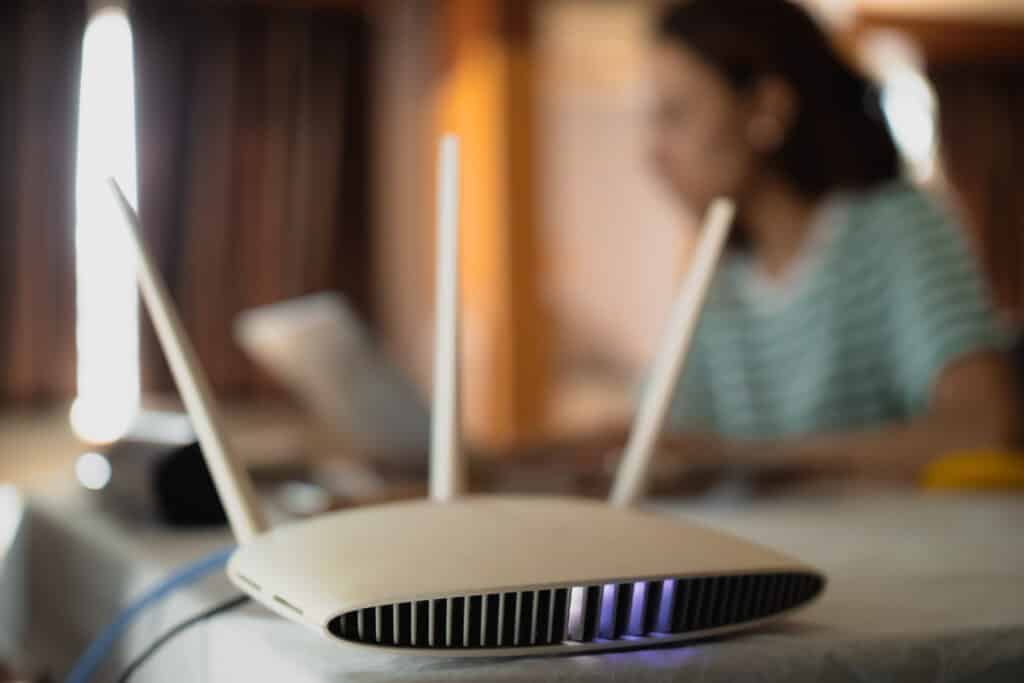
The How-To Guide on Router Software Maintenance
First off, identify the manufacturer of your router by checking its label. This detail guides you towards the correct website for downloading updates. No guesswork needed here; check the label stuck somewhere on your device if you’re unsure.
Next step: access router settings through its IP address typed into any web browser bar—not Google search—just directly in where URLs go. If this feels like trying to crack an ancient code, don’t worry. The default gateway number usually does the trick (think 192.168.x.x).
Last part: with login credentials at hand (please tell me you’ve changed them from ‘admin’), look for something that screams “update” or “firmware.” Click around until you find it because navigating these menus can feel like being lost in space without GPS.
The Unseen Benefits Beyond Security
Beyond keeping digital intruders at bay, firmware updates often bring performance improvements too. It’s not all about dodging bullets; sometimes it’s about making sure everything runs smoother and faster — like greasing gears so they don’t grind down over time.
An updated piece of hardware communicates better with newer devices too — it speaks their language fluently rather than fumbling through an outdated dictionary looking for words that no longer apply. Plus, using VPNs alongside these practices shields online activities even further, turning data unreadable by nosy parkers hovering uninvited over network traffic.
It doesn’t stop there though — you’re also less likely to suffer from annoying bugs or compatibility issues when connecting shiny new gadgets to older networks because yes, technology has mood swings too. But remember, keeping software updated means having one less thing to lose sleep over at night, knowing cyber watchdogs guard every byte coming in or going out.
At its core, making routine software upkeep mandatory strengthens your digital defenses and guarantees peak functioning. Adopting this habit not only shields against possible security gaps, but also ensures the system operates without a hitch, highlighting its importance in everyday procedures.
Best Practices in Password Management and Data Protection
Why Strong Passwords are Non-Negotiable
Passwords are the first line of defense against unauthorized access to your data. But not all passwords are created equal. Strong passwords contain special characters, numbers, and both upper and lower case letters. They’re like a unique key to your digital house; you wouldn’t make it easy for someone to copy that key, right? Changing them regularly further reduces risk.
The truth is simple: weak passwords invite trouble. Imagine using “123456” or “password” as your lock combo—it’s almost like leaving the door wide open for identity thieves.
Navigating through the labyrinth of intricate passwords, it might be wise to employ a password manager for simplicity and security. It’s a vault that stores every key securely under one master password—the only one you need to remember.
Creating Unbreakable Barriers with Encryption
Data encryption transforms readable information into an unreadable format unless you have the correct decryption key (or password). This means even if someone intercepts your data mid-transmission while teleworking, they can’t read it without cracking the code first—a Herculean task with strong encryption standards like WPA3 on Wi-Fi networks.
Virtual Private Networks (VPNs) elevate this protection by creating secure tunnels for online activities—making network traffic unreadable to prying eyes outside these encrypted pathways.
Leveraging Advanced Settings For Extra Security
To truly fortify your home wireless network from threats such as malware infections or hacker intrusions, dive deeper into router settings beyond just setting up a strong password:
- Disable Remote Admin Access: This stops anyone from managing your router’s settings remotely — cutting off a favorite attack path for hackers seeking unauthorized entry into networks.
- Firmware Updates Are Key: Keeping router software updated ensures vulnerabilities get patched before attackers exploit them.
- Create Separate Guest Networks: Isolate guest devices from accessing other connected devices within your primary network—minimizing potential breaches originating from less-secure visitor gadgets.
Kick Unauthorized Users Off Your Network Highway
Maintaining control over who connects involves two critical strategies: changing default credentials immediately upon setup and enabling MAC address filtering—an access control method where only approved devices can join based on their hardware ID (MAC addresses).
This combination turns away most casual trespassers because they either encounter an unexpected roadblock when trying defaults—or find themselves locked out due to unrecognized MAC addresses altogether.
Adopting such strategies demands some exertion, yet it culminates in bolstered defenses against the digital hazards targeting individuals working from afar. It ensures that sensitive personal and professional information remains secure and confidential.
FAQs: How Should You Secure Your Home Wireless Network for Teleworking
How should you secure your home wireless network for teleworking?
Enable WPA3 encryption, use strong passwords, update firmware regularly, and limit access with MAC filtering.
How do I secure remote access to my office network?
Avoid using public Wi-Fi without a VPN. Enable two-factor authentication on all accounts where possible. Regularly change passwords.
Conclusion
Having delved into fortifying your home Wi-Fi for remote work, it’s crucial to prevent any unauthorized access to both your professional and personal information. Ensuring your digital life remains private involves preventing outsiders from glimpsing into your work or personal information.
Remember the basics: Change those factory-set passwords and usernames right away. Let WPA3 encryption be your digital shield against intruders.
Create that guest network. It keeps visitors on their own playground, far from your vital files. And don’t forget to regularly update that router firmware; it patches up security holes you didn’t know existed. Don’t just ask “how should you secure your home wireless network for teleworking,” but rather take these proactive steps to keeps the intruders out and your work (and personal) information safe.
Lastly, consider using VPNs for an extra layer of privacy during those online marathons.
In short, taking these steps isn’t just smart; it’s essential in today’s world of remote work. Make unauthorized access a legend of the past by implementing what you’ve learned here today.



